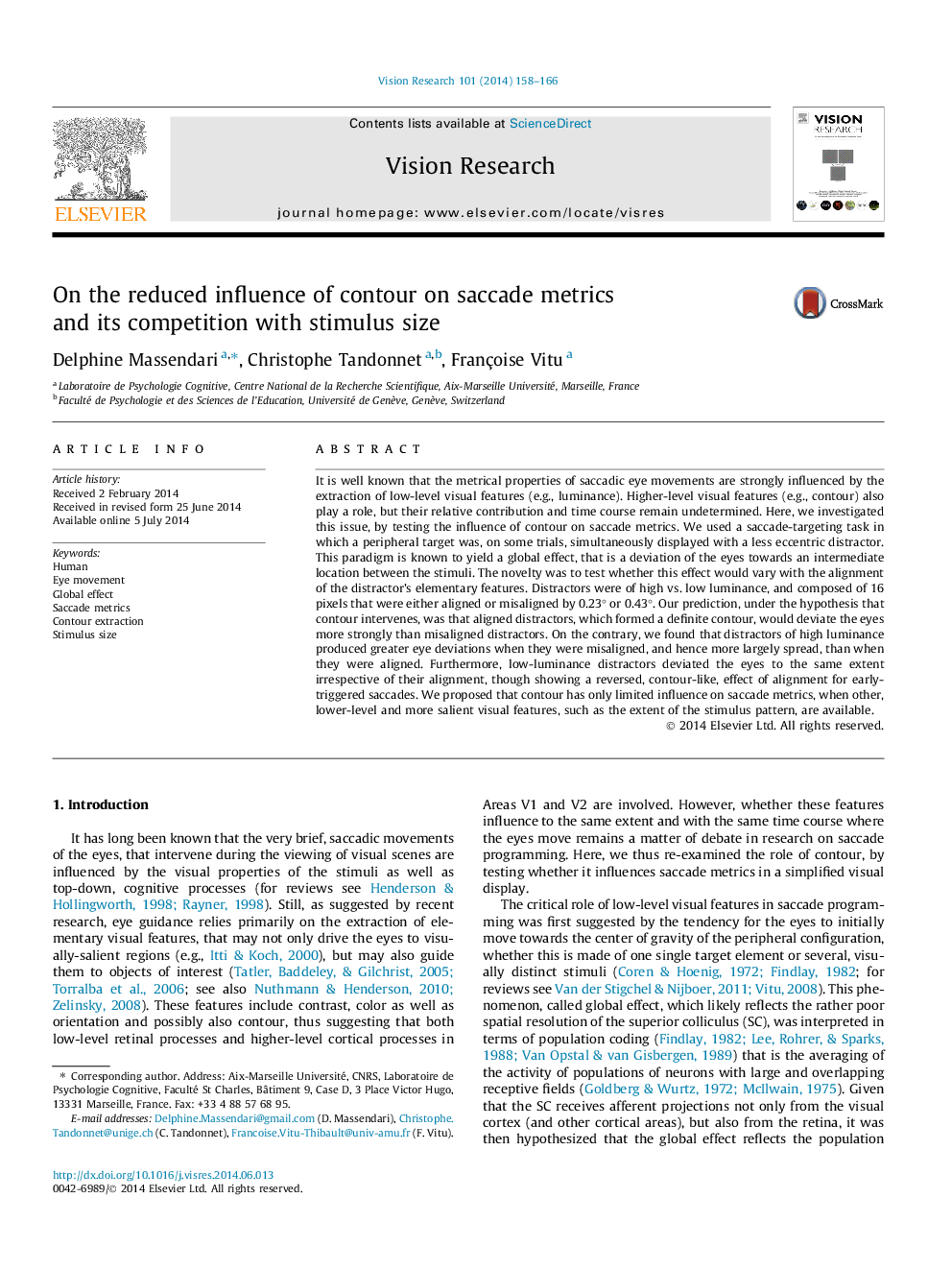| Article ID | Journal | Published Year | Pages | File Type |
|---|---|---|---|---|
| 4033723 | Vision Research | 2014 | 9 Pages |
•Testing the role of contour in saccade programming by misaligning distractor dots.•High-luminance distractors are more disruptive when they are misaligned.•Low-luminance distractors are equally disruptive irrespective of their alignment.•Contour has limited influence on saccade metrics.•Contour can hardly compete with faster visual signals associated with stimulus size.
It is well known that the metrical properties of saccadic eye movements are strongly influenced by the extraction of low-level visual features (e.g., luminance). Higher-level visual features (e.g., contour) also play a role, but their relative contribution and time course remain undetermined. Here, we investigated this issue, by testing the influence of contour on saccade metrics. We used a saccade-targeting task in which a peripheral target was, on some trials, simultaneously displayed with a less eccentric distractor. This paradigm is known to yield a global effect, that is a deviation of the eyes towards an intermediate location between the stimuli. The novelty was to test whether this effect would vary with the alignment of the distractor’s elementary features. Distractors were of high vs. low luminance, and composed of 16 pixels that were either aligned or misaligned by 0.23° or 0.43°. Our prediction, under the hypothesis that contour intervenes, was that aligned distractors, which formed a definite contour, would deviate the eyes more strongly than misaligned distractors. On the contrary, we found that distractors of high luminance produced greater eye deviations when they were misaligned, and hence more largely spread, than when they were aligned. Furthermore, low-luminance distractors deviated the eyes to the same extent irrespective of their alignment, though showing a reversed, contour-like, effect of alignment for early-triggered saccades. We proposed that contour has only limited influence on saccade metrics, when other, lower-level and more salient visual features, such as the extent of the stimulus pattern, are available.
